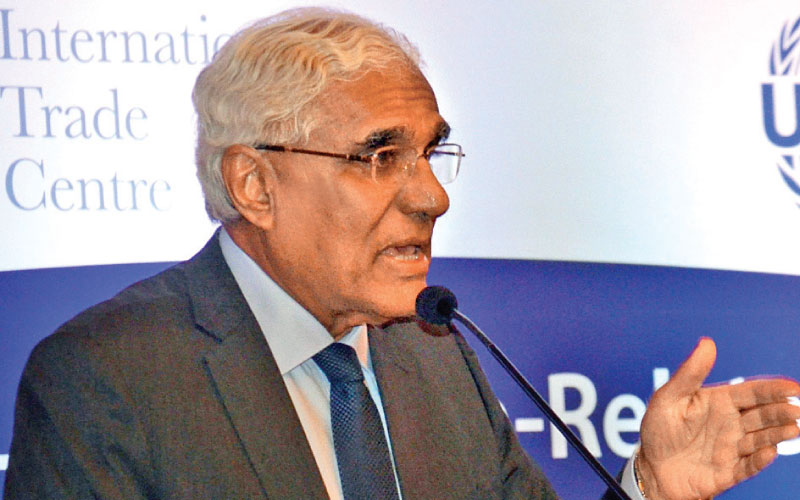Sri Lanka could be the only country in the world with preferential access to China, India and the European Union under GSP plus if the partnership agreement with China ends successfully.
Central Bank of Sri Lanka (CBSL) Governor, Indrajit Coomaraswamy speaking at the seminar on ‘International Trade Agreements:Policy Options for Sri Lanka’ last week said that they are trying to renegotiate the bilateral agreement in goods with India to expand it to cover services, investment in technology and training and a similar agreement is to be negotiated with China.
Furthermore, a partnership agreement with Singapore and a bilateral agreement on goods with Pakistan and another partnership agreement with Thailand is to be negotiated. “The location along with this preferential access, Sri Lanka could develop a lot. But a lot needs to be done. We have made a start but the progress is slow,” he said.
UK has been a major trading partner accounting for 8.2%of exports and 1.2%of imports in 2018, the Governor said that the impact of Brexit on Sri Lanka depends on the outcome of the process as well as the trade policies that the UK would adopt afterwards.
He also said that the growth in exports is not happening much faster while in imports the expenditure increases at a much faster pace. This is in contrast to the trade performance of successful countries of East and South East Asia. “The reason for our exports for not having a considerable growth is due to not having straight forward policies in exports, failure in increasing the volume and complexity of products and less diversification of export products,” he added.
Furthermore, reduced international competitiveness in Sri Lankan products due to high production cost, lack of labour and complex import tariff structure, high electricity cost in production and existence of para tariffs which impede access to global supply chains also can be taken as the issues and challenges faced in external trade sector of the country.
However with the decline of exports to 12.4%in 2016, a considerable increase was seen in years afterwards. In 2018 exports recorded 3.4%of GDP. A number of policy measures have been taken to address the issues and challenges related to external trade. Improving trade logistics, a new trade policy was introduced with the objective of attracting more export oriented FDIs, increasing transparency and efficiency of customs procedures, the launch of the National Export Strategy by Export Development Board (EDB) which spans fover a five year development program from 2018 to 2022 which has made considerable progress so far, an innovation and entrepreneurship strategy formulated by the technical assistance from the World Bank and launch of a trade information quota by the Department of Commerce in 2018 are some of them.
He further said that all these measures taken together should serve to address the policy framework which has constraints on export expansion. The start has been made and more could be done.
Diversification of services exports in terms of infrastructure and skilled labour should be there which is vital. Special consideration should be placed particularly upon Information Technology, business process outsourcing and tourism sectors. Manufacturing should not be ignored. New industrial zones should be created. Consideration needs to be given to begin trade with new markets specially in Asia with the support of trade agreements in terms of exports and greater integration with global and regional economy on trade agreements are crucial for the country to move forward.
He also said that despite the political instability last year and the heinous event of April, the underlying fundamentals of the economy are in reasonable shape. However growth is the challenge. Currently the growth rate is at about 3% where the potential growth rate as estimated by the CBSL is about 5%.
“So we need to get that up. But achieving it should not be done by artificial pumping up growth through inappropriate macroeconomic policies such as loosening monetary policies or either having expanding fiscal policies or both. Strengthening the growth framework through structural reforms, should be done. Here trade policies acts a major role,” he said.



Add new comment